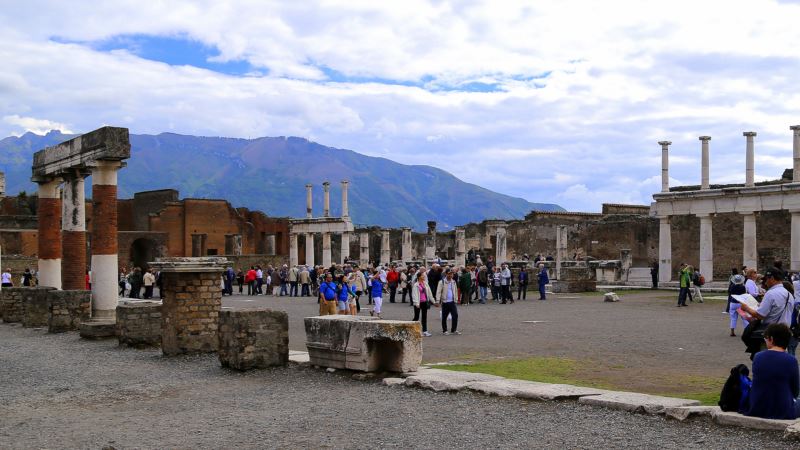It is nearly impossible to imagine that day in 79 AD when the eruption of Mount Vesuvius destroyed the Roman city of Pompeii. The volcano buried the city and thousands of its inhabitants under a four-to-six-meter blanket of embalming ash that preserved Pompeii until its rediscovery in the late 1500s. Pompeii is now a UNESCO World Heritage Site and research is still being conducted on this uniquely preserved vision of life during the Roman age of the Emperors. Researchers at Sweden's Lund University have taken what archaeologists know about life in Pompeii and created a dazzling look at a block of homes on one street in the city. The genesis of the project came after a disastrous 1980 earthquake shook southern Italy, killing more than 2,000 people and causing widespread architectural damage. In the aftermath, the Pompeii city curator invited the international research community to help document Pompeii as time and nature were taking their toll on the unearthed city. Researchers from the Swedish Institute in Rome answered the call and started the Swedish Pompeii Project in 2000. Lund University in Sweden took over the project in 2010 and expanded it into the world of digital archaeology. The city district was meticulously scanned during a year of field work, and four years later the team is able to show what Pompeii actually looked like in its heyday. The digital video featured here shows the home of one of Pompeii's richest citizens, a Roman banker named Caecilius Iucundus. Beyond detailing the rich life of the citizens of Pompeii, the team, according to Lund University, has also uncovered "a tavern, a laundry, a bakery and several gardens." The team also studied the water and sewer systems and discovered how water in part established "the social hierarchies at the time, and … how retailers and restaurants were dependent on large wealthy families for water …" The work behind the 3-D film and a discussion on the credibility of the reconstructions are presented in an article, published in SCIRES Italy.
Digital Archaeology Walks Viewers Through Pompeii






